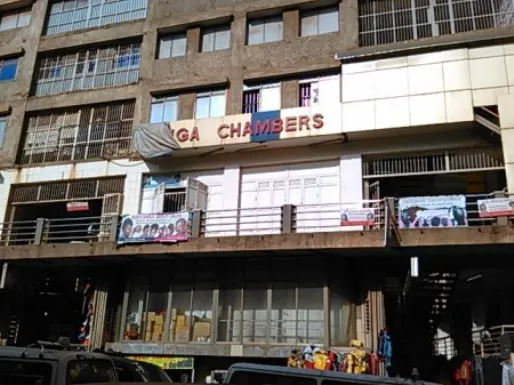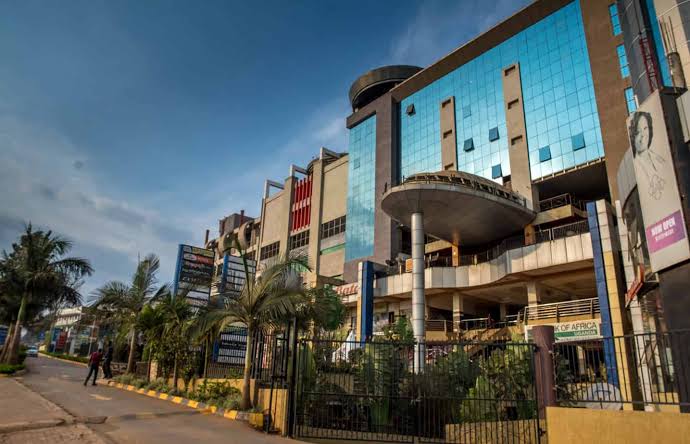If John Ssebalamu walked from City Square to the old taxi park, chances are that nine out of ten Ugandans would not be able to positively identify him.
This is because the billionaire is reclusive, shy and will do anything to avoid the limelight. And that is how he has quietly built his business empire that includes prime properties in the city centre and other holdings.
Yet how did he start?
Early life
John Ssebalamu was born and grew up in Kasanje, present day Kalungi district in the mid 1950s.
In interviews, he says that he dropped out of school in 1982, when life became hard.
“I then began peddling matooke on his bicycle. I would purchase it from farmers in Kasanje and transport it to Nyendo town in Masaka,” he says.
Later he changed his line of business and started dealing in paraffin after realising that it was very profitable.
I would strap four jerry cans of paraffin on my bike and ride from market to market,” he says.
In the mid 1980s, he relocated to Masaka town where he rented stalls and began selling shoes.
In the shoes business, Sebalamu joined forces with his elder brother, John Bosco Muwonge, who is also a wealthy businessman and a property mogul.
“We bought shoes from dealers and sold them in Masaka. By 1988, we were well-known in Masaka,” he says.
He says they were also mentored by their late elder sister Naiga, who ran a second-hand clothing business in Masaka.
Ssebalamu later named one of his buildings Naiga Chambers in memory of his late sister.

He says with capital of UGX 20 million, the two brothers also entered the second-hand clothing business, as their late elder sister had recommended them.
When she died a year later, they took over her business, which enhanced their stock even more.
Enters Kampala
Having conquered Masaka, Ssebalamu says they set their sights on Kampala, the most economically developed city in Uganda.
In the late 1980s, they entered the city capital of UGX100 million.
With his brother Muwonge, they were the first Ugandans to bring new garments to Kampala from Dubai. They would bring the clothing, which Dubai vendors would give them on credit in bales known as dozens.
“We would return, sell the clothes, and then return to Dubai to pay for them. We also rented a shop in the Skylight Arcade, which was located near the former Buganda Bus Park,” he says.
Property mogul
After making it big in garments, he ventured into real estate in the mid-1990s.
His foray into real estate, he says, was also hastened by the strictness of Uganda Revenue Authority (URA) in collecting taxes from garment traders.
When Ssebalamu first entered the property market, the property prices in downtown Kampala skyrocketed.
A downtown building costs between US$80,000 and US$200,000 (USh80 million and USh200 million back then. Going by the exchange rate today, this is equivalent to UGX290 million and UGX 1 billion respectively.
Unfortunately, the majority of those who had rented these buildings from the Custodian Board could not afford to pay for them. As a result, only Ugandans with money could purchase these buildings.
Between 1995 and 1998, he purchased more properties in town and developed a few, including the Carlton Hotel and the former Container Village, but he also sold many of them.
Ssebalamu built his first building, Capital House, on Ben Kiwanuka Street in 1995. It was the first of the modern shopping arcades that can be found across downtown Kampala and other growing areas. It was built in a different style than everyone else. He had imitated the Dubai style.
Many businessmen started to mimic Ssebalamu’s actions. All they did was buy old buildings, demolish them, and build shopping malls similar to the ones he saw in Dubai. Traders quickly filled the gap, resulting in substantial returns.
Ssebalamu later erected Naiga Chambers and Mini Price building in downtown Kampala. He also owns Capital Shopping Complex along Nakivubo Road and Capital House on Dastur Street.
Yet his most iconic piece of real estate is Freedom City in Najjanankumbi along Entebbe Road.

Here is how he built it.
First he bought 3.5 acres of prime property for $1 million (Shs 3.6 billion). Then he commissioned an architect to come up with a one of a kind shopping mall. Once the plan was ready, he embarked on the construction.
At first I estimated that the project will cost me more than $20 million (about Shs 75 billion). Later the cost shot to $ 30 million,” he says
He says he was his own contractor and obtained all of his materials, from sand to metal panels. He obtained all of the sand for the project from a sand mine in Lwera which he owns.
In three years the building had taken shape and today it is one of the most prominent centres for recreation for families. It also hosts music shows.
While it is difficult to estimate Ssebalamu’s wealth, he is believed to be a billionaire at leats by Uganda’s standards.
